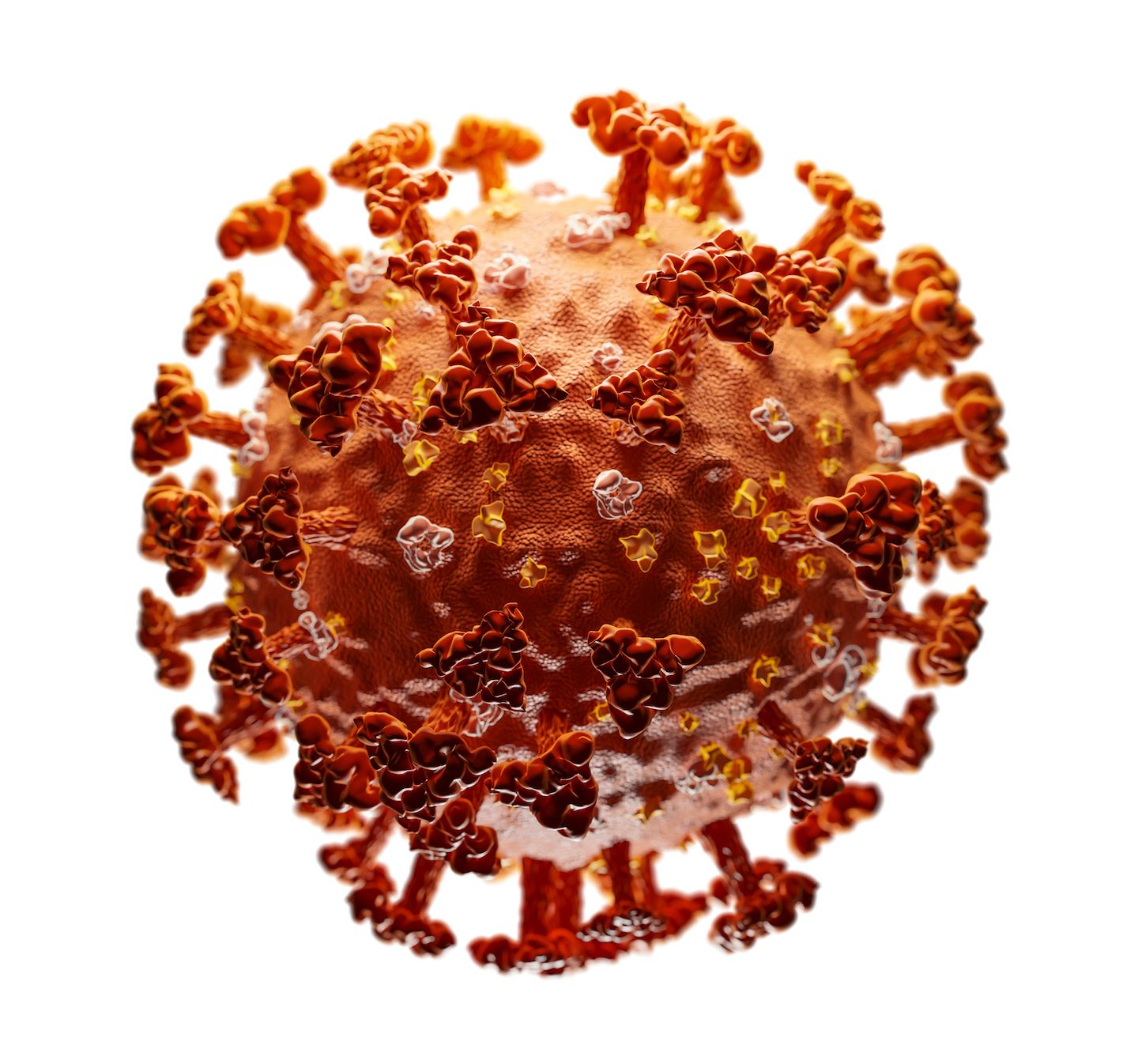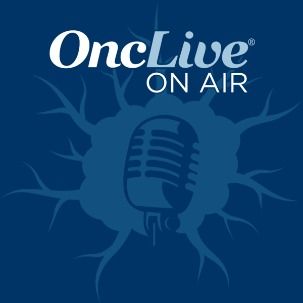Article
SGO COVID-19 Task Force Provides Guidance During "Our Version of the Great Depression"
Author(s):
Warner K. Huh, MD, discusses the management of gynecologic cancers during the COVID-19 era, the SGO COVID-19 task force, and what is needed to quell the pandemic, which he refers to as our version of the Great Depression.

The biggest impact of the COVID-19 pandemic on patients with gynecologic cancers has been the delay of surgeries or the delay of treatment after surgery, according to Warner K. Huh, MD, who added that providers are now faced with determining who can safely delay the procedure versus those who cannot afford to wait.
“Initially, with the COVID-19 crisis, there was concern about maintaining resources, particularly personal protective equipment. In some areas of the country, maintaining blood supplies [was another challenge],” said Huh, the 51st President of the Society of Gynecologic Oncology (SGO). “However, the biggest [worry] was delaying surgery; that's what was causing a lot of consternation and concern for practitioners. Who do you delay versus who do you not delay?”
However, surgery is not the only area in which providers are seeking additional guidance. In the realm of gynecologic cancers, determining what to do with regard to chemotherapy poses another challenge. To this end, providers must determine whether the treatment is curative or not. If so, they need to figure out how to proceed with treatment without putting patients at risk of infection with COVID-19. The virus has also resulted in the shutdown of clinical trials, added Huh, and investigators are working very hard to come up with a plan to get these efforts safely back on track.
In response to this rapidly changing situation, Huh and colleagues decided to create the SGO COVID-19 Task Force as a way to gather and disperse important resources regarding surgery, infusion, clinical trials, resident and fellow education, patient communications, and wellness during the pandemic.
In our exclusive interview, Huh, who is also the professor, vice chair, and division director of the Division of Gynecologic Oncology at the University of Alabama at Birmingham, discussed some of the key challenges faced in the management of gynecologic cancers in light of the COVID-19 crisis, shared some of the resources provided by the SGO COVID-19 task force, and projected what is needed to quell the pandemic, which he refers to as version of the Great Depression.
OncLive: How is COVID-19 impacting patients with gynecologic cancers in practice?
Huh:The biggest impact has been the delaying of surgeries, and in some cases, delay of treatment after surgery. We got to the point where we were taking certain cases and we were saying, “OK, we're comfortable with delaying this patient's surgery by 1 month or 2” versus perhaps a patient's cancer that we could not delay. How do we make that decision?
For example, we had recommended that women with advanced ovarian cancer receive chemotherapy up front rather than surgery up front. Those were the kind of discussions that we were having. We don't have any evidence base for this; a lot of it was just based on common sense.
Have you treated patients with cancer and COVID-19? Beyond surgery, how is treatment being modified?
I personally have not had any patients who were COVID-19 positive but I have had some colleagues who [have]. Without question, it has certainly delayed treatment, whether it's surgery and/or chemotherapy. The big question is, when do you re-treat those patients? Some practitioners until the patient is negative for COVID-19 on re-testing. If the patient was asymptomatic, they would go ahead and treat.
However, the challenge for us is having a very careful conversation with the patient to ensure they understand that they're definitely at a higher risk for morbidity as well as mortality. That’s a hard conversation to have because there are just so many unknowns. The biggest thing is delaying their treatment; for some people, [that means] delaying that indefinitely, to the point where everyone gets worried. Even though you delay with the anticipation of re-starting, your resource set at that time may not be such that you may not be able to re-start that patient.
What we’ve learned over the past 6 weeks is that every day is different—literally. You wake up one day and you're told, “You know what? You can't operate on anyone.” They next day, you're told, “You can't give chemotherapy on x number of patients.” It’s that uncertainty that has been really stressful to both patients and providers alike.
There appear to be mixed opinions on when cancer treatment should be re-started in patients who have been infected with COVID-19. Even if you test first, how do you deal with the challenge of false negatives?
That's right. The problem is that the testing platforms—whether you look at RNA testing, viral testing, or serology testing—are not perfect tests. You’re going to need to deal with not only false negatives, but false positives, as well. We just need to do the best we can. We want to know whether or not the patient is COVID positive, even for an asymptomatic patient who is going into surgery, because that will have an impact on the patient's outcome. This also affects the people who take care of that patient, particularly [with regard to] anesthesiology because they're going to have to be fully dressed in personal protective equipment (PPE). Knowing the patient’s status was initially a way to manage and conserve PPE. You can talk to the larger health systems, including academic institutions around the country; they're almost all universally performing preoperative testing on these patients.
With regard to testing, has your institution experienced any shortages?
We [have been] fine. Our biggest challenge [with regard to testing] was the turnaround time for [the results]. We had many facilities in the state or in the city that provided testing, but the turnaround time [for the results] was 7 days. A lot can happen in 7 days; it's hard to act on that. The biggest leap that our institution made was to have testing [come] back within 1 day; that was a huge deal. Now, we have a testing platform that allows us to have tests back within 45 minutes. That has transformed how we manage patients; it completely revolutionized how we manage obstetrical patients.
We've also just started to roll out our serology testing, so now we know which patients, and even which providers, have been exposed to the virus. Obviously, determining how to manage that patient population has been an area of active debate.
The biggest thing that was limiting for us [with regard to testing] was swabs. We were really concerned that we probably didn't have the number of swabs needed to test all the people [we would need to]. We could have had all the PCR reagents, but if we don't have a way to test and collect, that's a bottleneck. Another concern that I have with regard to the future is, “How do we test, not only providers, staff, and patients, but contact tracing in the state? How do you do that?” I believe swabs will be a real limiting factor going forward; that’s just something that we'll have to watch out for.
Could you tell me about the SGO COVID-19 Task Force? How did that come to be?
It became clear [a couple of months ago] that this virus was going to be disruptive to many things. Every March, we hold our annual meeting. This year’s meeting was going to be in Toronto, Canada, and we had been having discussions up to that point about whether we needed to cancel it altogether. Once we got past that hurdle of saying that we needed to cancel the meeting for the most obvious of reasons, it exploded. You saw the spike in Seattle. You started to see the spike in Italy. You saw what was happening in China. All of a sudden, we realized we had a major problem, to the point where practitioners recognized that this was now going to affect their daily practice and how they manage patients.
When this happened, we received many requests from our members asking, “What do I do in this situation? What do I do in that situation?” As such, we decided to put a task force together that would examine various key components of how we manage gynecologic cancers and try to release best evidence or best opinion guidance to really help our members.
What we have learned is that there are some great lessons that you can pick up from other people from other parts of the country that are smack in the middle of [the situation] and you can then take [that information to inform] some best practices. That’s exactly what we did. We were basically just putting out best practices from our entire membership and sharing it. [This effort] really was transformational for us because we have never put out this much information in such a short a period of a time ever in the history of our society. [We were blown away by the] amount of volunteerism [that we saw], that people still wanted to contribute even while being slammed at work. It was really remarkable. I think when we look back at this, we'll say, “Wow. It's really amazing what we're truly capable of.”
The Task Force released surgical considerations in light of the pandemic. Could you highlight some of the best practices included in that resource?
One of the main considerations is the importance of preoperative COVID-19 testing. What concerns me is that there are probably large portions of the country that don't have access to rapid testing, so that's going to pose a real challenge. In addition to testing, facilities are preoperatively performing CT scans of the chest to see whether radiologic changes consistent with COVID-19 are present. The use of PPE in the operating room is another important consideration, and how that's managed; that gets tied into testing, as well. Another one, as we mentioned earlier, has to do with determining which patients can be legitimately delayed versus those who cannot. There’s a massive grey zone in terms of how to deal with that. If you have resources, do you need to pull the trigger now? If you have an alternative therapy, can you do that instead? Some situations exist where [the answer is] obvious, but there are more situations where it's not as obvious, and that's what that communiqué covers.
We also warn of the punitive risk of aerosolization of the virus. Patients who have laparoscopic procedures are at theoretical risk of shedding virus at an increased rate than [those undergoing] non-laparoscopic procedures. It’s all because of the gas that we put into the patient's abdomen; we release that gas like a valve. There has been a lot of discussion about how to minimize and control that.
Those are the main themes [covered in the resource]. It’s amazing; if you had asked me this question 2 weeks ago, my answer would have been somewhat different. It would have been more resource intensive than anything else. Now, we’re starting to emerge out of this. As such, the discussion is going to look a little bit different. However, my concern is that we're not out of the woods. We're all worried that states are now [starting to lift] their restrictions. Will we see a second wave? If we don't see a second wave, and we see baseline cases, how long does that get dragged out for?
My greatest challenge is convincing patients to come back [into the clinic]. There is this overwhelming fear and concern that patients don't want to come back in and that's going to be a major barrier to providing care. Not to mention, some patients have foregone their cancer screening in the past couple of months; that will drag on as well, and we might see an uptick in terms of invasive cancer cases. This is all multifactorial; it’s going to be hard. There are reports that surveillance is going to need to go as far out as 2024; this is not a 2020 summertime/springtime thing. We’re going to be having this conversation well into 2021.
What is some of the guidance released regarding chemotherapy and clinical trials?
In a nutshell, there are several [factors] you should [consider]. For one, is the chemotherapy that you're going to give to the patient curative? Because if [the treatment is] going to be generally curative, then it shouldn’t be delayed; that's the general adage. Push those patients through, even in the era of COVID-19, because if we delay their therapy, we might be impinging or sacrificing their outcome. Secondly, we need to consider the patient’s age, and third, we need to look at how frail they are. Some patients are elderly and have numerous comorbidities; perhaps treating these patients during this time might be worse. We also need to look at the degree or level of toxicity of the drugs that we give them.
I'll give you an example that's a unique challenge. In our field, checkpoint therapy or immuno-oncology drugs like pembrolizumab (Keytruda) or nivolumab (Opdivo) are playing a bigger role in how we manage patients. One of the adverse events of those drugs is pneumonitis, which is basically inflammation of the lungs. That pneumonitis looks very similar to COVID-19 infection. How do you balance that?
We’re faced with the challenge of trying to stratify what we hope to accomplish, [looking closer at] who we are really treating, and [determining] whether the patient is too elderly or sick to be treated safely. You might have to consider delaying [treatment in those patients]. This is the rubric that we're trying to get providers to think about, not just [approaching things as] a simple yes or no but using a stepwise process to make [those difficult decisions].
[The pandemic] has [also resulted in the] complete shutdown of clinical trial operations. It has been really challenging to put patients on clinical trials because we don't have the staff. Either staff are not in, they're at home, or they're sick. As such, for many sites, clinical trials have come to a grinding halt, and for many of these patients, clinical trials were their best option. Now we're trying to figure out how to get our clinical trials back on track. In a nutshell, those are the things that we have espoused, learned, and some of the advice that we have passed on.
What is most needed to quell this pandemic?
We still need to have respect for [efforts] like social distancing and wearing a mask publicly. Maybe for the next several months, if your provider thinks it's reasonable, [patients should also] embrace a telemedicine platform. Asking the question of whether or not you absolutely need to have a certain procedure or test done in the era of COVID-19 [is another thing to consider]. You also need to be patient and recognize that everyone is super stressed out under the circumstances. This is not a time for people to lose their cool. Patients, providers, administration staff, and families are all under an enormous amount of pressure. We need to understand that.
This is not like flipping an on and off switch. We talk about flattening this curve and we have flattened it. However, remember that when you flatten the curve, it pushes the curve out; it has a consequence. We may be dealing with these issues for many months going forward. We need to recognize that everyone is doing their best. More often than not we don't have answers to everything and we're trying to do things based on common sense and compassion [to provide optimal] care [for our] patients.
This is probably the most transformative thing that will happen in our lifetimes; it's our version of the Great Depression. [COVID-19 is] our version of the 1918 Spanish flu. I don't mean to sound negative or pessimistic, but I don't believe that medicine will ever be the same after this. We will wake up and reprioritize what's really important for the United States and for our patients—and I mean that in a good way. I don't think we can ever get back to business the way it was pre—COVID-19.
I think many of us have taken things for granted that we shouldn't have. As for that generation that lived through the Great Depression, you can tell that they lived during that time; they look at life very differently. This generation is going to look at life very differently, as well, and I'm hoping that we will embrace what we have and not be so critical. There are positives to come out of this but a lot of it is recognizing that we're in it for the long haul. Hopefully the worst of it is done, but it's not really finished.






%20(2)%201-Recovered-Recovered-Recovered-Recovered-Recovered.jpg?fit=crop&auto=format)

%20(2)%201-Recovered-Recovered-Recovered-Recovered-Recovered.jpg?fit=crop&auto=format)
%20(2)%201-Recovered-Recovered-Recovered-Recovered-Recovered.jpg?fit=crop&auto=format)